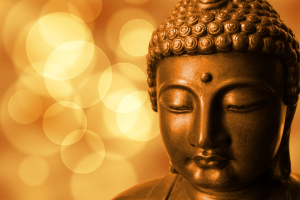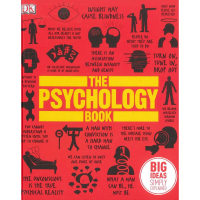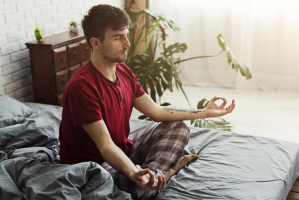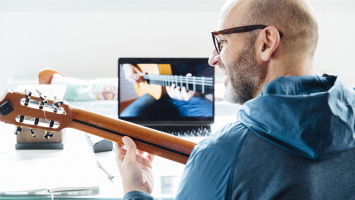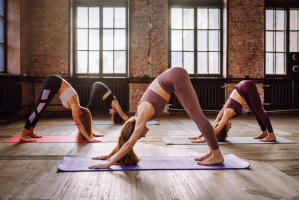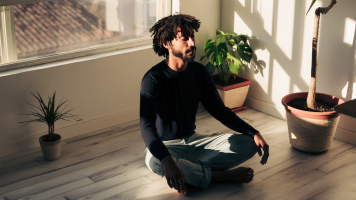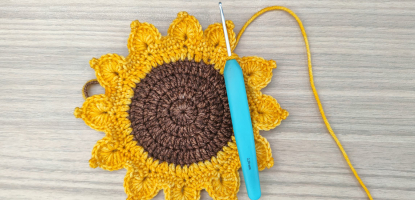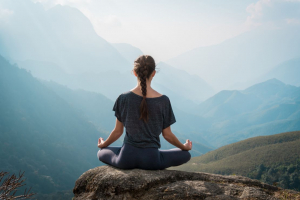Top 7 Ideal Meditation Techniques for Beginners
The goal of meditation is to calm the mind and body; it is not a difficult procedure, but there are some basic steps you may do to get started. If meditation ... read more...has been difficult for you, it is possible that you have been trying too hard. There are numerous approaches you can take to get started. Here are the 7 ideal meditation techniques for beginners.
-
Breathing meditation is one of the most ideal meditation techniques for beginners. The goal is to just pay attention to your breathing (its natural rhythm and flow, as well as how it feels on each inhale and exhale). Focusing on the breath is especially beneficial because it acts as an anchor–something you can return to at any time if you begin to feel worried or carried away by bad feelings.
Simply focusing your attention on your breath, the inhale and exhale, is the most basic form of mindful breathing. You can do this while standing, but sitting or sleeping in a comfortable position is preferable. You can keep your eyes open or closed, although closing your eyes may help you focus better. Setting up a certain time for this exercise can help, but it can also be good to perform it when you're feeling particularly stressed or nervous. Experts believe that practicing mindful breathing on a regular basis can make it simpler to do so under stressful situations.
Sometimes, especially when trying to relax in a stressful situation, taking an exaggerated breath can help: a deep inhale through your nose (3 seconds), a breath-hold (2 seconds), and a long expiration through your mouth (4 seconds). Otherwise, simply watch each breath without attempting to adjust it; focusing on the rise and fall of your chest or the sensation through your nostrils may assist. While doing so, your attention may wander, distracted by thoughts or body sensations. Simply be aware that this is happening and gradually return your attention to your breathing.
You could be sitting in a chair or on a cushion on the floor. Maintain a straight back, but not too straight. Hands are resting wherever they are most comfortable. Place your tongue on the roof of your mouth or somewhere else that feels comfortable. Allow yourself to relax and become inquisitive about your body while seated here (the sensations it feels, the touch, the connection to the floor or the chair).
Pay attention to your breathing. Feel the natural flow of your breathing, in and out. Nothing needs to be done to your breath. Not too long, not too short, just right. Take note of where your breath is felt in your body. It could be in your stomach. It could be in your chest, throat, or nostrils. Try to feel the feelings of breathing one at a time. When one breath comes to an end, the next one begins.
As you do this, you may notice that your mind begins to wander. You might begin to consider other things. It is not a concern if this occurs. It's completely natural. Just be aware that your thoughts have wandered. You might softly say "thinking" or "wandering" in your brain. Then softly bring your attention back to your breathing. After a few minutes, notice your body, your entire body, sat here. Allow yourself to relax even more deeply, and then thank yourself for practicing this practice today.
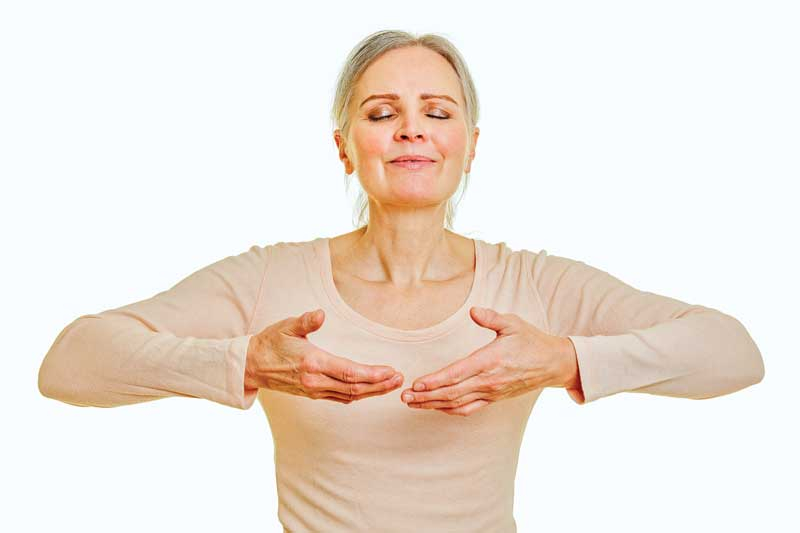
Photo: veterinarypracticenews.com Video: MassGeneralHospital -
Mindfulness is the fundamental human ability to be fully present, and aware of where we are and what we are doing, without becoming unduly reactive or overwhelmed by what is going on around us. While mindfulness is something we all have, it becomes more accessible to us when we practice it on a daily basis.
Being mindful occurs whenever you bring awareness to what you're directly experiencing through your senses or to your state of mind through your thoughts and emotions. And there's emerging evidence that training your brain to be aware actually changes the physical structure of your brain.
As one of the most ideal meditation techniques for beginners, mindfulness meditation is a mental exercise that helps you to slow down racing thoughts, let go of negativity, and relax both your mind and body. It blends meditation with mindfulness practice, which can be defined as a mental state in which you are fully focused on "the present" in order to observe and accept your thoughts, feelings, and sensations without judgment. Mindfulness meditation techniques differ, but in general, it entails deep breathing and body and mental awareness.
Mindfulness meditation does not necessitate any special equipment or preparation (no need for candles, essential oils, or mantras, unless you enjoy them). All you need to get started is a comfortable location to sit, three to five minutes of free time, and an open mind.
It can help ensure you're not meditating for too long because many individuals lose the sense of time while meditating. Allow yourself time after meditation to become aware of where you are and to gradually rise. While some people meditate for longer periods of time, even a few minutes every day can help. Begin with a 5-minute meditation session and gradually extend your sessions by 10 or 15 minutes until you can meditate for 30 minutes at a time.
Acquaint yourself with the sensation of air going in and out of your body while you breathe. Feel your tummy rise and fall as the air enters and exits your nostrils. Take note of how the temperature changes when the breath is inhaled vs exhaled.
Don't ignore or suppress your thoughts when they arise. Simply take note of them, be cool, and use your breathing as a guide. Consider your thoughts to be clouds going by; see how they shift and alter as they float by. Repeat this as often as necessary while meditating.
If you find yourself being carried away in your thoughts, whether from worry, fear, anxiety, or hope, simply examine where your mind went and return to your breathing. Don't be too hard on yourself if this happens; mindfulness is the habit of returning to your breath and refocusing on the present moment.
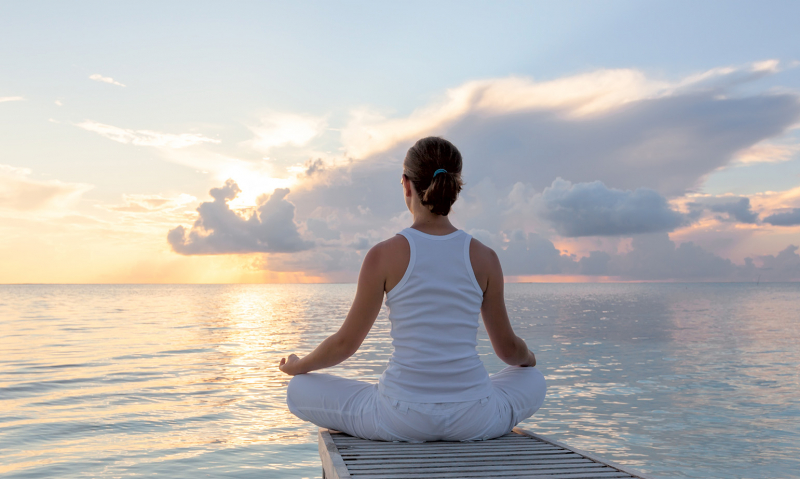
Photo: helpguide.org Video: Great Meditation -
Focused meditation entails concentrating on something intensively in order to stay in the present moment and quiet down the inner dialogue.
Unlike traditional meditation, when you focus on nothing to quiet your mind, focused meditation allows you to stay in the present moment while focusing entirely on one item. Similar to mindfulness meditation approaches, you typically focus on sensory stimuli such as sounds, visual elements, tactile sensations, tastes, scents, and even your own breathing.
Concentrated meditation can help you increase your attention and focus for extended periods of time. When you focus your attention on a certain item during meditation, you learn to pay less attention to other distractions. Many people find that focused meditation helps them feel less annoyed by interruptions such as a loud car alarm or the sounds of people arguing over time.
Focused meditation can also help you regulate your emotions. You learn to react to your internal feelings in the same manner that you would to a loud automobile alarm. You notice and accept the diversion, but you don't dwell on it.
Sit in a relaxed but alert way. Close your eyes if you like, or softly lessen the visual field by directing your focus downward. Set yourself up in a comfortable seated position. Consider your body, your feet on the ground, the feelings of sitting, your legs and torso making touch with your seat or the ground. Sit erect but not stiffly, relaxing into your body and breathing naturally. Then pay attention to your breathing experience, the sensations of the in-breath, and the sensations of the out-breath. Observing the flow of air in and out of your body. Direct your whole, undivided attention to this feeling of breathing, whatever it means to you. Observing the air entering and leaving your body. Paying attention to the entire breathing cycle.
The mind can wander away many times, therefore if you find your mind has traveled away from your breathing, take note and gently but firmly return your attention back to your breathing. Return to the feeling of in-breaths and out-breaths, the complete cycle of breath. This is the technique of concentrating on the breath. As we get to the end of this practice of concentrated attention, I'd like to urge you to take three slightly deeper breaths at your own pace. Then, when you are ready, open your eyes.
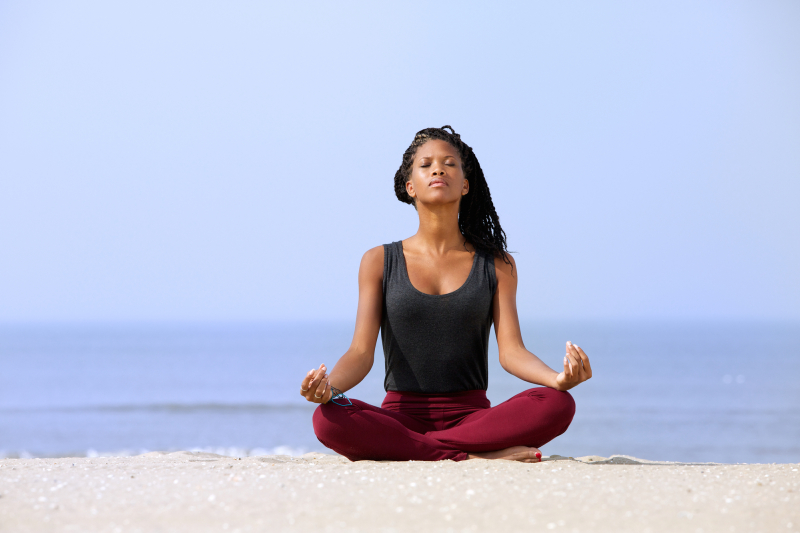
Photo: realitypathing.com Video: The Mindful Movement -
Walking meditation is a mindfulness technique that combines walking's physical experience with the concentrated concentration of a meditative state. Walking meditation brings meditation to life by allowing you to focus on the mind-body connection as you pace or walk around a room or outside. You choose your walking pace and the length of your session using this type of meditation. During a walking meditation session, the practitioner walks for a set amount of time, focusing on the movements and physical sensations of the body with each step.
Walking meditation, also known as kinhin, is a Buddhist practice that involves movement and intervals of walking in between extended periods of seated meditation. The practice is common in numerous Theravada and Mahayana Buddhist traditions in varied forms. Practitioners often move clockwise around a room while making a fist with one hand and grasping or covering the fist with the other hand. Walking meditation involves taking one step after each complete breath. Walking meditation can be done at a slow (many steady steps per breath) or vigorous (nearly running) pace.
Walking meditation might assist you in staying in the present moment. Throughout a session, you bring your attention inward while your body moves and your mind wanders, strengthening your concentration and awareness of your physical surroundings and mental condition. It can be difficult to find time for yourself in today's hectic world. Walking meditation can help you slow down racing thoughts and resist life's numerous distractions, giving you more time to focus completely on your mental and spiritual requirements. In this type of meditation, you pay attention to all of your bodily sensations while walking, similar to a moving body scan in which you inventory your physical being. Take note of how your feet feel when they make contact with the ground, how your arms swing with each stride, or how your posture aligns as you move slowly.
Spend a few moments standing motionless before beginning to walk. Allow your attention to be drawn to your body. Deep breaths, inhaling deeply into the belly. Concentrate solely on the sensation of breathing. Allow the breath to return to normal and observe it going on its own for a few moments. Bring your consciousness back to your body, notice how it feels as you stand, and become aware of all the sensations going on in it.
Walk at a comfortable, moderately slow yet steady pace. As you walk, pay attention to the sensations in your body. It is natural for your attention to be drawn to the sights around you as you walk, but keep your focus on what is going on inwardly. Walking involves the complete body, from the alternation of the left and right foot to the swinging of your arms and hips. Let go of any tightness you notice anywhere in your body. Allow that area of your body to unwind. Relax your ankles, belly, shoulders, arms, neck, and entire body. Allow your hips to swing freely. Walking will become more fun as you do this.
You can scan your body at random, moving your awareness from place to place, or you can scan your entire body systematically, traveling from the soles of your feet to the top of your head, experiencing the feelings of movement. The most important thing is to maintain your awareness of your body's feelings, effortlessly bringing them back when your mind wanders.

Photo: eliteworldhotels.com.tr Video: Yuttadhammo Bhikkhu -
Progressive muscular relaxation is a type of relaxation technique that involves gradually tensing and relaxing muscle groups across your entire body. Working through the body, tense one muscle group at a time, then release the tension and notice the contrasting sensation of relaxation. Progressive muscle relaxation not only relieves anxiety at the moment but can also reduce overall tension and stress levels with frequent practice.
You will tighten each muscle group vigorously but not strainingly, then release the tension and feel the muscle relax. Each muscle will be stiff for roughly 5 seconds. If any of the targeted muscle areas cause you pain or discomfort, skip that step. You can imagine the muscles tensing and a wave of relaxation pouring over them as you release the tension during this exercise. It is critical that you continue to breathe throughout the activity.
Progressive muscular relaxation allows you to distinguish between the subjective feeling of a tightened muscle and that of a relaxed muscle. You can gradually learn what it feels like and cue this state to reduce tension and stress levels when you begin to feel anxious. The approach can help with a variety of health issues, including insomnia, anxiety, depression, high blood pressure, digestive issues, and the adverse effects of cancer treatment.
You should begin by lying or sitting down. Take five deep, steady breaths while relaxing your entire body. After that, you raise your toes. Hold, then release. Draw your toes down. Hold, then release. Next, strain and then relax your calf muscles. Return to the original position by bringing your knees closer together. Squeeze your thigh muscles, then relax. Tense your arms, clench your buttocks and constrict your abdominal muscles (hold some seconds for each step and then let go). Then you exhale and tighten your chest. Hold for a moment, then exhale and let go. Raise your shoulders all the way to your ears. Pause, then release. You purse your lips, widen your mouth, close your eyes tightly, and raise your brows (hold some seconds for each step and then release).
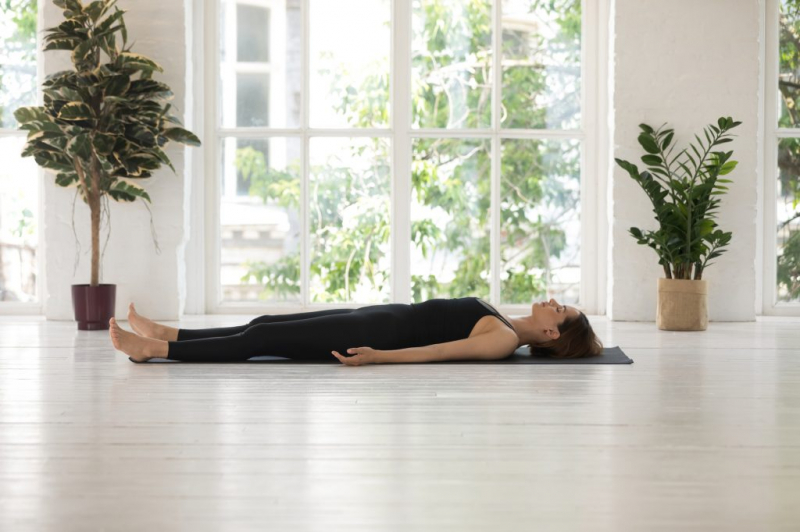
Photo: truerelaxations.com Video: Singapore General Hospital -
A mantra is a repeated syllable, word, or phrase used during meditation. Mantras can be spoken, chanted, murmured, or mentally repeated. The two most important components of most mantra meditation approaches are awareness meditation and mantra recitation or chanting. While varieties of "holy word" recitation are known to have Buddhist and Hindu roots, they also occur in a wide range of spiritual traditions, including Judeo-Christian and Shamanic. Mantra practice is becoming more popular as part of secular mindfulness practice.
Mantra meditation is practiced for a variety of reasons. For some, it acts as a kind of mental shield against unwanted distractions or emotions, such as while combating insomnia or coping with travel-related worries. Mantra meditation serves a higher spiritual meaning for some. Mantra recitation, for example, is utilized in certain Hindu and old Christian traditions to focus the mind-heart and connect with the divine, both within and without. One of the benefits of mantra recitation in Buddhism is that it helps keep the mind concentrated and open to the gifts of the present moment. Because Buddhism is a non-theistic religion, the mantra evokes positive characteristics and confidence rather than an external deity.
Find a peaceful spot where you may meditate without being interrupted. Choose a position that you can maintain for the duration of your meditation, such as sitting on the floor, in a chair, lying down, or even walking. Mudras, or hand positions, can assist certain persons in entering a meditative state, but they are not required. Set a timer for how long you want to meditate and consider choosing a soft, calming sound, such as ocean waves or birdsong, to prevent the alarm from disturbing your serene meditation state.
Pay attention to your breathing without attempting to change it. Simply concentrate on the sensation of it entering your lungs and filling your entire body. As you begin to chant your mantra, continue to breathe slowly and firmly through your nose. You can say it aloud (which may be more effective with mantras intended to produce vibrations) or repeat it silently. It is generally beneficial to match your chant to your breathing. Allow your breath to guide you. Your chant and breathing will gradually settle into a rhythm as you settle into the meditation. Following this flow may help your meditation feel more natural unless you're intending to employ a specific breathing technique.
Remember to gently redirect your thoughts when they wander. You'll undoubtedly notice your mind wandering as you meditate. When this occurs, don't try to push those unwelcome ideas away. Instead, simply notice them, let them go, and then resume the mantra. Don't get up right away when your timer goes off. Instead, sit quietly with your peaceful mind for a few moments. This final activity allows you to check in with yourself and monitor your progress.
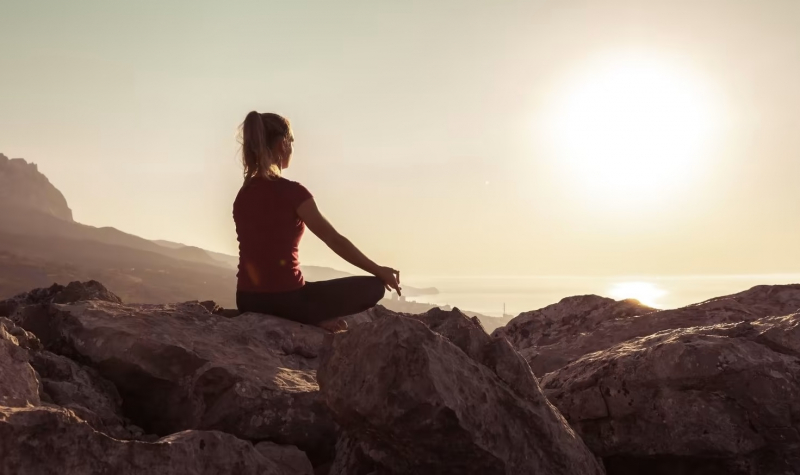
Photo: thelatch.com.au Video: Yoga with Kassandra -
Metta meditation (loving-kindness meditation) is a popular self-care technique for improving well-being and reducing stress. Those who practice loving-kindness meditation on a daily basis might improve their capacity for forgiveness, connection to others, self-acceptance, and other benefits. This technique is difficult since you are asking yourself to send kindness to yourself or others. Allowing yourself to receive or send your own love typically takes work.
Metta meditation, which the Buddha taught 2600 years ago, is still practiced in many traditional Buddhist communities today, exactly as he taught it. Metta meditation is a wonderful complement to other forms of awareness practice. Specific words and phrases are recited to elicit a "boundless warm-hearted sensation".
As one of the most ideal meditation techniques for beginners, Metta meditation does not require any particular equipment or gear to begin. Another advantage is that you can do it anywhere (in a peaceful corner of your home, outside in your yard, or even at your desk). Choose a location where you are least likely to get distracted, then proceed with following procedures. You should sit in a position that is comfortable for you. Close your eyes and take a slow, deep breath in through your nose, followed by another deep breath. Then, concentrate on your breathing and envision it traveling through your body.
Concentrate on your heart and choose a pleasant, encouraging statement. Recite the words silently, pointing them toward yourself. You can say "May I be happy. May I be safe . May I find peace ". Repeat these phrases slowly. Recognize its significance and how it makes you feel. Avoid judging yourself if you become distracted. Simply return to the phrase and repeat it. Consider your friends and family. Consider a specific person or a group of people. Recite the line “May you be happy. May you be safe. May you find peace” to them. Continue to use the statement to others, including neighbors, acquaintances, and problematic people. Recognize and accept your emotions, even if they are unfavorable. Repeat the phrase until you get sentiments of compassion.

Photo: 30seconds.com Video: Plum Village App









